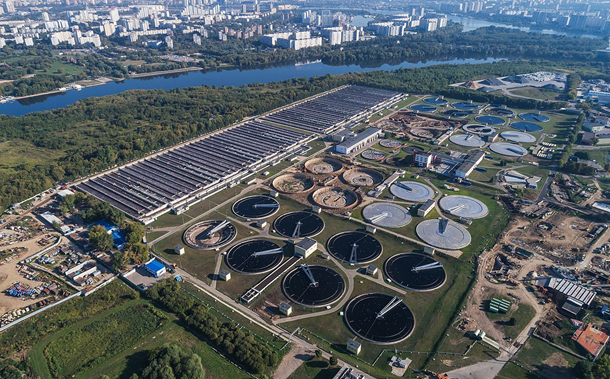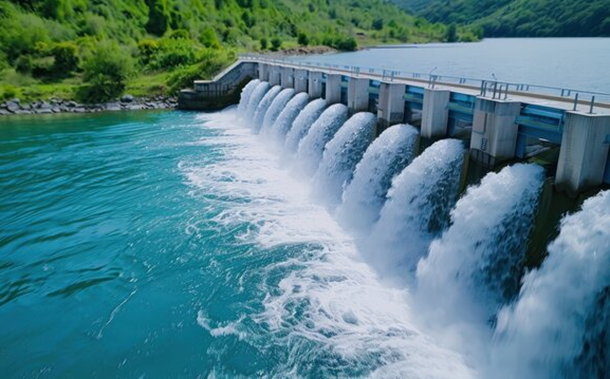Measuring Belt and Road Initiative Perceptions: A Comparative Analysis of Thai Border and Non-Border Regions
Downloads
Doi:10.28991/CEJ-2024-010-12-010
Full Text:PDF
Downloads
[2] Gong, X. (2019). The Belt & Road Initiative and China's influence in Southeast Asia. Pacific Review, 32(4), 635–665. doi:10.1080/09512748.2018.1513950.
[3] Punyaratabandhu, P., & Swaspitchayaskun, J. (2018). The Political Economy of China–Thailand Development under the One Belt One Road Initiative: Challenges and Opportunities. Chinese Economy, 51(4), 333–341. doi:10.1080/10971475.2018.1457326.
[4] Wang, C., Lim, M. K., Zhang, X., Zhao, L., & Lee, P. T. W. (2020). Railway and road infrastructure in the Belt and Road Initiative countries: Estimating the impact of transport infrastructure on economic growth. Transportation Research Part A: Policy and Practice, 134, 288–307. doi:10.1016/j.tra.2020.02.009.
[5] Snitwongse, K. (2001). Thai foreign policy in the global age: Principle or profit? Contemporary Southeast Asia, 23(2), 189–212. doi:10.1355/CS23-2A.
[6] Apaitan, T., Luangaram, P., & Manopimoke, P. (2022). Uncertainty in an emerging market economy: evidence from Thailand. Empirical Economics, 62(3), 933–989. doi:10.1007/s00181-021-02054-y.
[7] Tritto, A., & Camba, A. (2023). The Belt and Road Initiative in Southeast Asia: A Mixed Methods Examination. Journal of Contemporary China, 32(141), 436–454. doi:10.1080/10670564.2022.2090099.
[8] Ploywarin, S., Song, Y., & Sun, D. (2018). Research on factors affecting public risk perception of Thai high-speed railway projects based on "Belt and Road Initiative.” Sustainability (Switzerland), 10(6), 10 3390 10061978. doi:10.3390/su10061978.
[9] Di Graziano, A., & Marchetta, V. (2021). A risk-based decision support system in local railways management. Journal of Rail Transport Planning & Management, 20. doi:10.1016/j.jrtpm.2021.100284.
[10] Punyaratabandhu, P., & Swaspitchayaskun, J. (2021). Thailand's Perception and Strategy toward China's BRI Expansion: Hedging with Cooperating. The Chinese Economy, 54(1), 69–77. doi:10.1080/10971475.2020.1809819.
[11] Ma, S. (2022). Growth effects of economic integration: New evidence from the Belt and Road Initiative. Economic Analysis and Policy, 73, 753–767. doi:10.1016/j.eap.2022.01.004.
[12] Cao, Y., Jiang, A., Cao, Z., Fayyaz, A., Li, J., Chen, W., & Guo, W. (2022). Impact of the Belt and Road Initiative on Economic-Social-Natural Ecological Niches and Their Coupling Coordination: Evidence from 11 Countries along the Route. Frontiers in Environmental Science, 10. doi:10.3389/fenvs.2022.913928.
[13] Jomnonkwao, S., Champahom, T., & Ratanavaraha, V. (2020). Methodologies for determining the service quality of the intercity rail service based on users' perceptions and expectations in Thailand. Sustainability (Switzerland), 12(10), 4259. doi:10.3390/su12104259.
[14] Theerathitichaipa, K., Wisutwattanasak, P., Se, C., Seefong, M., Jomnonkwao, S., Champahom, T., Ratanavaraha, V., & Kasemsri, R. (2024). Assessment of Disparity in Accessing Railway Stations in Thailand: an Application Geographic Information System Network Analysis. Journal of Geovisualization and Spatial Analysis, 8(1), 6. doi:10.1007/s41651-023-00168-8.
[15] Wedel, P. F., & Rondinelli, D. A. (2001). Thailand: Opportunities and risks in a fast"changing business environment. Thunderbird International Business Review, 43(6), 797–812. doi:10.1002/tie.1030.
[16] Khamphengvong, V., Zhang, H., Wu, Q., & Thavisay, T. (2022). Examine the Economic and Social Effects on Lao People's Perceived Benefit Attitudes towards BRI. Sustainability, 14(9), 5088. doi:10.3390/su14095088.
[17] Kuik, C. C., & Rosli, Z. (2023). Laos-China infrastructure cooperation: legitimation and the limits of host-country agency. Journal of Contemporary East Asia Studies, 12(1), 32–58. doi:10.1080/24761028.2023.2274236.
[18] Bunnak, P., Song, N., Chen, X., & Thomson, R. (2024). A governance perspective on China's belt and road initiative: a case study of the Sino-Thai railway project. Journal of Asian Public Policy, 1–20. doi:10.1080/17516234.2024.2386719.
[19] Man, C. Y., & Palmer, D. A. (2022). Geo-mapping databases of the Belt and Road Initiative. Figshare, London, United Kingdom. doi:10.6084/m9.figshare.c.6076193.
[20] Nambulee, W., Champahom, T., Jomnonkwao, S., Watthanaklang, D., & Ratanavaraha, V. (2023). Comprehending travel intentions during and after the Covid-19 pandemic based on psychological theory models. Transportation Research Interdisciplinary Perspectives, 22. doi:10.1016/j.trip.2023.100933.
[21] Aiyara, T. (2019). The Long and Winding Railway: Domestic Politics and the Realization of China-Initiated High-Speed Railway Projects in Thailand. Chinese Political Science Review, 4(3), 327–348. doi:10.1007/s41111-019-00124-2.
[22] Heiduk, F., & Sakaki, A. (2019). Introduction to the Special Issue”China's Belt and Road Initiative: The View from East Asia. East Asia, 36(2), 93–113. doi:10.1007/s12140-019-09312-y.
[23] Liu, S., Wan, Y., & Zhang, A. (2020). Does China's high-speed rail development lead to regional disparities? A network perspective. Transportation Research Part A: Policy and Practice, 138, 299-321. doi:10.1016/j.tra.2020.06.010.
[24] Lieophairot, C., & Rojniruttikul, N. (2023). Factors affecting state railway of Thailand (SRT) passenger train service use decision: A structural equation model. Heliyon, 9(5), 15660. doi:10.1016/j.heliyon.2023.e15660.
[25] Hurley1, J., Morris2, S., & Portelance3, G. (2019). Examining the debt implications of the Belt and Road Initiative from a policy perspective. Journal of Infrastructure, Policy and Development, 3(1), 139. doi:10.24294/jipd.v3i1.1123.
[26] Bouraima, M. B., Alimo, P. K., Agyeman, S., Sumo, P. D., Lartey-Young, G., Ehebrecht, D., & Qiu, Y. (2023). Africa's railway renaissance and sustainability: Current knowledge, challenges, and prospects. Journal of Transport Geography, 106, 103487. doi:10.1016/j.jtrangeo.2022.103487.
[27] Luo, H., & Zhao, S. (2021). Impacts of high-speed rail on the inequality of intercity accessibility: A case study of Liaoning Province, China. Journal of Transport Geography, 90. doi:10.1016/j.jtrangeo.2020.102920.
[28] Moscovici, M. (1961). Child personality and rural environment. í‰tudes Rurales, 1(1), 57–69. doi:10.3406/rural.1961.963.
[29] Moscovici, S. (1988). Social representations: Essays in social psychology. NYU Press, New York, United States.
[30] Ajzen, I. (1991). The Theory of planned behavior. Organizational Behavior and Human Decision Processes, 50, 179-211, Academic Press, Cambridge, United States.
[31] Ajzen, I. (2020). The theory of planned behavior: Frequently asked questions. Human Behavior and Emerging Technologies, 2(4), 314–324. doi:10.1002/hbe2.195.
[32] Hung, J. (2024). Transitioning to Greener Sino-Thai Belt and Road Initiative: How China Finance Thailand's Environmental Sustainability. Environmental Health Insights, 18, 11786302241258348. doi:10.1177/11786302241258348.
[33] Ashraf, J., Luo, L., & Anser, M. K. (2022). Do BRI policy and institutional quality influence economic growth and environmental quality? An empirical analysis from South Asian countries affiliated with the Belt and Road Initiative. Environmental Science and Pollution Research, 29(6), 8438–8451. doi:10.1007/s11356-021-16330-y.
[34] Ahmad, T., & Ullah, S. (2023). Development under Belt and Road Initiative: Gains for Tourism Industry in Participant Countries. Journal of China Tourism Research, 19(4), 950–972. doi:10.1080/19388160.2023.2167895.
[35] Liu, M., & Ma, H. (2023). Untangling the effects of the Belt and Road Initiative on carbon dioxide emissions. Journal of Environmental Management, 325(Pt B), 116628. doi:10.1016/j.jenvman.2022.116628.
[36] Muthén, L. K., & Muthén, B. O. (2012). Statistical analysis with latent variables using Mplus. Muthén & Muthén, Los Angeles, United States.
[37] Rigg, J., Law, L., Tan-Mullins, M., & Grundy-Warr, C. (2005). The Indian Ocean tsunami: Socio-economic impacts in Thailand. Geographical Journal, 171(4), 374–379. doi:10.1111/j.1475-4959.2005.00175_3.x.
[38] Chachavalpongpun, P. (2024). Roots of Resilience: Interests and Values in Thai Foreign Policy. Journal of Current Southeast Asian Affairs, 43(3), 18681034241248475. doi:10.1177/18681034241248475.
[39] Lindberg, J., & Biddulph, R. (2021). China's belt and road initiative: The need for livelihood-inclusive stories. Geoforum, 121, 138–141. doi:10.1016/j.geoforum.2021.02.015.
[40] Leng, T. (2019). Underlying Factors of Cambodia's Bandwagoning with China's Belt and Road Initiative. East Asia, 36(3), 243–253. doi:10.1007/s12140-019-09316-8.
[41] Zhang, E., & James, P. (2023). All Roads Lead to Beijing: Systemism, Power Transition Theory and the Belt and Road Initiative. Chinese Political Science Review, 8(1), 18–44. doi:10.1007/s41111-022-00211-x.
[42] Farazi, N. P., Murshed, M. N., & Hadiuzzaman, M. (2022). Application of machine learning to investigate heterogeneity in users' perception of intercity train service quality in developing countries. Case Studies on Transport Policy, 10(1), 227–238. doi:10.1016/j.cstp.2021.12.004.
[43] Yang, Y., & Li, F. (2019). ASEAN–China Cooperation under the Framework of the Belt and Road Initiative: A Comparative Study on the Perspectives of China and ASEAN. The Belt and Road Initiative, 1–58, World Scientific, Singapore. doi:10.1142/9789811205774_0001.
[44] Park, S. C. (2022). The roles and strategies of ASEAN in the Belt and Road Initiative (BRI). Cuadernos Europeos de Deusto, 03, 115–148. doi:10.18543/ced-03-2022pp115-148.
- Authors retain all copyrights. It is noticeable that authors will not be forced to sign any copyright transfer agreements.
- This work (including HTML and PDF Files) is licensed under a Creative Commons Attribution 4.0 International License.![]()














